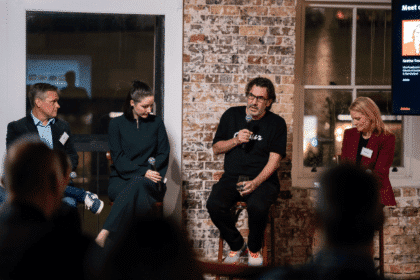In this guest post, Ben Birchall (pictured below), ECD editorial at CHE Proximity Australia, takes a look at last week’s Comms Council announcement about the value of the local ad industry and says we all need to look past the $$$$…
Industry watchers will have noticed this week that the Communications Council has released its report Advertising Pays: The Economic Employment and BusinessValue of Advertising in conjunction with Deloitte Access Economics. It’s the first comprehensive study into the value of advertising, and it may not surprise us that it’s worth a fair bit: annual expenditure on advertising in Australia was $40 billion in 2014. That’s almost 2.5 per cent of GDP.
They’re impressive figures. But digging below the numbers, one section resonated.
“Advertising has a role to play in corporate strategy,” the report states.
As somebody who works at an agency riding the disruptions of the industry, this made sense. Disruption isn’t new – radio was going to kill print, TV was going to kill radio, digital was going to kill TV and now programmatic is going to kill everything. The difference to this wave of change is that our outputs as advertising agencies is changing. So little of what I do – and what we do – can be described as advertising.
Our role now takes in insights, media strategy, product innovation, bidding, CX, UX, public relations. And that was just my Wednesday.
Advertising used to drive sales. But then, I used to be a copywriter that knew that 80 words just fits into 30 seconds. In the new paradigm, advertising isn’t just about the ad, it needs to be about everything in the ecosystem. And for a copywriter, those 80 words now need to have multi-variant versions for various user journeys and include 17 SEO keywords.
As Chris Howatson, CEO of CHE Proximity Australia reminds us weekly, “if we’re not servicing the entire customer journey, we’re not truly making people more valuable to brands.”
So how do we do that exactly? I’ve picked four areas the report touches on that help to define the broad brush strokes that make up the modern agency.
Experience: End to end thinking
The report states: “As consumers have access to more information about products and services…it is more important than ever to ensure that those products, services and also customer experiences deliver clear and consistent expressions of a firm’s brand.”
As we see from the graph, brand image plays a vital role in how we choose a product or service. But advertising only makes up a small portion of this brand image – the rest is all about the experience. It means that how brands are built has fundamentally changed. There are so many interactions with a brand and our perception is built on every one of those touch-points.
People buy products for the things at the edges: brand experiences. The Tiffany’s box, the Uber app (and free chewie and water), Apple Pay. As agencies, we need to inform every one of these moments, and not trust that they will be handled by another agency. The future of the brands we’re entrusted with depends on it. Their growth and market position depend on it.
Insight: Taking a closer look
Insight has always been part of advertising, the report notes: “Customer insights are required to understand changes in consumer preferences, which inform corporate strategy and a shape the development of product and service offerings.”
We’re no longer testing the ad and changing the headline or making the logo bigger. We’re testing the journey, shaping the product and making the service bigger. And we’re doing it in more sophisticated ways. We have an actual astrophycisist in our data department at CHEP.
Innovation: Making it up
Innovations don’t stop in the ad breaks any more. More and more we’re seeing product and advertising blur, particularly in the digital space. There would be very few agencies that don’t have an app on the shelf of the eStore for one of their clients.
We recently rolled out an Apple Watch app called Fearless. The Snickers Hungerithm uses social media sentiment to meddle with price – one of the P’s of the marketing mix that advertising traditionally didn’t touch.
Another of the case studies in the report is the Share a Coke campaign from Ogilvy. Far from living in the ad breaks, this was packaging design. And more than a local campaign, it’s been rolled out in over 80 countries.
Integration: Bringing it all together
Another case study in the report is the NAB Break-Up. The beauty of the Break-Up is that essentially, it was a corporate manifesto that touched all aspects of the business. As the report states:
“Maximising the potential of advertising as an effective business strategy tool is reliant on collaborative leadership at the leadership level.”
It’s hard to believe the Break-Up working without buy-in elsewhere in the C-Suite. Even the bravest CMO wouldn’t fly a helicopter over a major city with their logo on it. Agencies can play a role in galvanizing our clients’ vision, helping them think bigger and take that thinking to their customers.
Advertising Pays is an excellent snapshot of the industry over the past few years. In thinking about where the next $40 billion will come from, and to continue to support the 200,000 people we employ, our scope needs to broaden.
As advertising agencies, if we’re only looking after the advertising for our clients then we’re not trying hard enough.










